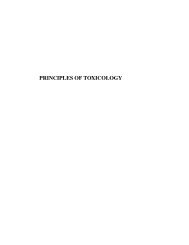Insect-pests - Biology East Borneo
Insect-pests - Biology East Borneo
Insect-pests - Biology East Borneo
Create successful ePaper yourself
Turn your PDF publications into a flip-book with our unique Google optimized e-Paper software.
4 The State of the Forest and Plantation Trends<br />
Table 2.1.<br />
Forest categories as per forest land use by consensus<br />
Category<br />
Purpose 1<br />
Area 2 (million ha)<br />
% Area<br />
Nature Reserve and<br />
Recreation forest<br />
Conservation, including wildlife,<br />
national parks and tourism<br />
18.8<br />
13<br />
Protection forest<br />
Watershed protection<br />
30.3<br />
21<br />
Production forest<br />
Selective timber harvesting<br />
33.9<br />
24<br />
Limited production forest<br />
Harvest restricted to protect<br />
environment<br />
30.5<br />
21<br />
Convertible forest<br />
Conversion for estate crops,<br />
smallholdings, future agricultural<br />
use, etc.<br />
30.5<br />
21<br />
Total<br />
-<br />
144.0<br />
100<br />
1<br />
vide Gautam et al. (2000); 2 Area in 1984<br />
Source: Handadhari (1997)<br />
were made. Due to this, the area figures given by<br />
various authors in the above categories often differ<br />
(e.g. see Leech et al. 1996; MoFEC 1999).<br />
The 64 million ha of production forest (including the<br />
30 million ha of limited production forest) is a massive<br />
resource for wood production. Ensuring the<br />
sustainability of production in these forests, and<br />
arresting forest conversion within the set limit of<br />
about 30 million ha are the main challenges of<br />
Indonesian forestry today. The basic principles to<br />
guide sound forest management have been identified<br />
as national interest, sustainability of yield, multisectoral<br />
benefits, equality and justice for all provinces<br />
and peoples within the country, social participation,<br />
and encouragement of agroforestry and smallholder<br />
forestry. However, there are constraints putting these<br />
principles into practice, which have been identified<br />
as conflict of interest among development sectors<br />
and the irresponsible attitude of forest<br />
concessionaires (see MoF 1993; Handadhari 1997).<br />
2.3. Forest concession right and<br />
plantation development<br />
Management of Indonesian forests has traditionally<br />
been vested with forest concessionaires. In Java, a<br />
Government-owned company, Perum Perhutani, has<br />
been given the responsibility for management of about<br />
3 million ha of State-owned forests. The mandate<br />
includes planning, management, exploitation and<br />
protection of all forests in Java and Madura, except<br />
nature reserves and parks. Thus, Perum Perhutani<br />
manages about 1 million ha of naturalised teak forests<br />
that have been planted and managed since the Dutch<br />
colonial times (1870s), in addition to nearly another<br />
million hectares of plantations of Pinus, Agathis,<br />
Dalbergia spp. and other species were raised later.<br />
Teak plantation are managed in Java under the taungya<br />
system, in which local farmers are permitted to plant<br />
food crops between rows of forest trees during the<br />
initial years of tree growth.<br />
In 1967, Forest Concession Right (Hak Pengusahaan<br />
Hutan, or HPH) was granted to private and State-owned<br />
enterprises, to exploit natural forests in the outer<br />
islands. In the “production” and “limited production”<br />
forests, besides exploiting the timber, forest<br />
concessionaires were required to undertake<br />
rehabilitation planting in the logged area. There was a<br />
rapid increase in the number of concessionaires, from<br />
64 in 1970, with a concession area of 7.8 million ha to<br />
462 in 1979, with a concession area of about 50 million<br />
ha (MoF 1993). Simultaneously, shifting agriculture<br />
by indigenous communities and excessive logging by<br />
the concessionaires created vast areas of degraded,<br />
secondary forests, which were often converted into
















